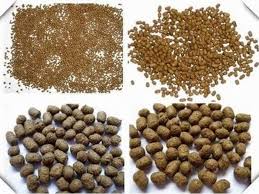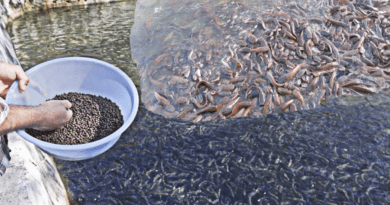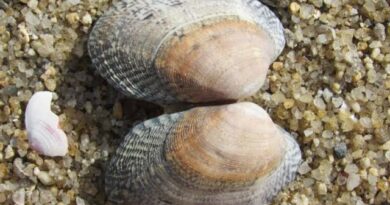Advantages of Imported Catfish Feeds over Local Feeds
Imported catfish feeds have some advantage over the local which includes: most imported feeds are floating feeds and thus do not contaminate water easily compared with local feeds which are mostly sinking feeds/pellets.
Also, being floating pellets, imported feeds are not usually wasted as most of them can stay on the surface of the water for more than two hours, thus making them to have access to it unlike sinking pellets.
In terms of nutrient value, imported feeds are more nutritious than the local feeds. Thus may be due to the fact that most feed millers don’t give attention to details in compounding fish feeds and thus do not add all the necessary feed ingredients to the feeds.
The major disadvantage of imported feeds over local feeds is that it is much more costly and as such, most farmers could not afford feeding their fish on it for as long as expected.
Read Also: The Recommended Feeding Levels for Catfish at a Water temperature of 27-28°C
Types of Catfish Feeds (Catfish Food)

Since there are different stages of catfish growth, there are different stages of fish feed; fish feed are often denoted in mm, so you’ll see/hear about 1.5mm feed, 1.8mm feed, 2mm feed, 4mm feed, 6mm feed etc.
There’s also extruded (or floating) and non-extruded (or sinking) feed.
What I recommend is to give your fishes extruded (or floating) feed for up to 2 months before switching to the non-extruded (or sinking) feed.
Catfishes are mostly bottom feeders, so by their very nature they are designed to be eating non-extruded (or sinking) feed, but the reason I recommend giving them floating feed at the early stage is because they are more fragile then.
With floating feed, you can put the feed on the pond gradually and let them eat it; the risk of overfeeding is significantly reduced, thereby ensuring there is no water pollution that can lead to high mortality in your very fragile juveniles.
Furthermore, due to their fragile nature, giving your juveniles feed that isn’t rich with the right nutrients can affect their long-term growth; going with floating feed from recognized producers like Durante, Cargill Aqua Feed, Raanan, and Coppens will ensure optimal growth of your fishes, even when you later switch to sinking feed comprising of your own formula.
That said, the top feed producers that I recommend and have used are Aqua Feed, Durante and Raanan; I’ve heard that Coppens could be the best, but there are lots of adulterated versions of it, so I won’t recommend it since the inexperienced farmer could fall victim to these adulterated versions. From my research, I have also noticed that Aqua Feed, Coppens and Raanan are available internationally.
What Feed Size to Give Your Catfishes
Like I said earlier, there are various fish feed sizes, whether you go for floating or sinking feed; sinking feed is usually bigger, and longer, than floating feed.
From my experience, here are the different sizes I’m currently aware of:
1.5mm, 1.8mm, 2mm, 3mm, 4mm, 6mm, 8mm, 10mm, etc.
The bigger you fishes, the bigger the feed size they can pick.
Here’s what I recommend if you just stocked your ponds, if your fishes fall into the following categories:
- Fingerlings (3 to 4 grams): 1.5mm feed size
- Post-fingerlings (4 – 6 grams): 1.8mm feed size
- Juvenile (6 – 10 grams): 2mm feed size
- Post-juvenile (10 – 50 grams): 2mm feed size
As your fishes grow, the size of feed they can pick will increase. Here’s the feed size I recommend for bigger fishes, based on their size/weight, if you’re to give them floating feed:
- 10 – 50 grams: 2mm feed size
- 50 – 150 grams: 3mm feed size
- 150 – 400 grams: 4mm feed size
All things being equal, your fishes should be around 200 – 300 grams in 2 months with floating feed alone, if they are being fed properly; after then, you can switch to sinking feed and give them the following feed sizes:
- 200 – 300 grams: 2mm feed size
- 300 to 600 grams: 4mm feed size
- 600 grams to 1kg+: 6mm feed size
If your fishes exceed 1kg in weight, and you’re able to get bigger feed sizes, then you can consider giving them 8mm, or even later 10mm, feed sizes. 3 to 4kg fishes eat 6mm sinking feed just fine, though, so don’t worry too much if you can’t find bigger feed sizes.
Read Also: Meaning of Recirculating Aquaculture System (RAS) in Fish Farming
How Often Should You Feed Your Fishes?

How often you feed your fishes will differ depending on a lot of factors, but for the results I get an average of 1.5kg to 2kg fish size in 6 months – here’s what I recommend:
- Fingerlings (3 to 4 grams): twice daily
- Post-fingerlings (4 – 6 grams): once or twice daily
- Juvenile (6 – 10 grams): once or twice daily
- Post-juvenile (10 grams and above): once daily
- Anything above post-juvenile: once daily
All things being equal, I feed my fishes daily until they reach the 6 months mark when I sell them; this is absolutely essential if you want optimal results.
Types of Catfish Feeding
There are two feeding types I use for my fishes:
1. Broadcast Feeding: This basically involves me going round my ponds and spreading floating feed all over the pond to ensure all the fishes in the pond can eat.
I use this for my fishes if they are in the fingerlings to post-juvenile stage, and I do this because they just got introduced into a large body of water, often from somewhere significantly smaller, and not all the fishes can come to the same spot to eat.
By spreading the floating (or extruding) fish across the pond, I’m ensuring they all get to eat. Once my fishes become more mature, often this is in the post-juvenile stage or around 30 – 50 grams, I instantly switch to spot feeding.
2. Spot Feeding: Spot feeding is less time-consuming and more effective, since it is less stressful and I can carefully monitor how my fishes are eating.
Spot feeding is basically me feeding my fishes in one spot. I try getting my fishes to eat in one spot once they reach 30 – 50 grams, or after 2 – 3 weeks of stocking them from juvenile stage.
At first, if they are used to eating using the broadcast style, most of the fishes won’t come to a particular spot to eat; however, by ONLY feeding them on that spot for a few days, they’ll be conditioned to come to that spot and eat.
Read Also: Ways to Properly Dispose your Household Wastes









